A Guide to the 5 Royal Palaces of Seoul
categories: asia travelAn Introduction To The Royal Palaces In Seoul
.jpg)
Gyeongbokgung Palace Seoul
Tourists looking to enjoy a quintessentially Korean experience should look no further than a day out at a royal palace in Seoul. Discover the majesty of the palace buildings towering over wide courtyards that were once filled by Korea’s bravest and most noble citizens. Explore the many areas of natural beauty that showcase Korea’s cherry blossoms and fall foliage, all partnered with pavilions and pagodas to provide awe-inspiring scenes. Find moments of serenity in traditional teahouses and cafes with delightful Korean green tea and other natural beverages as you look out over glimmering ponds and people dressed in flowing Korean hanbok.
Table of contents: ()
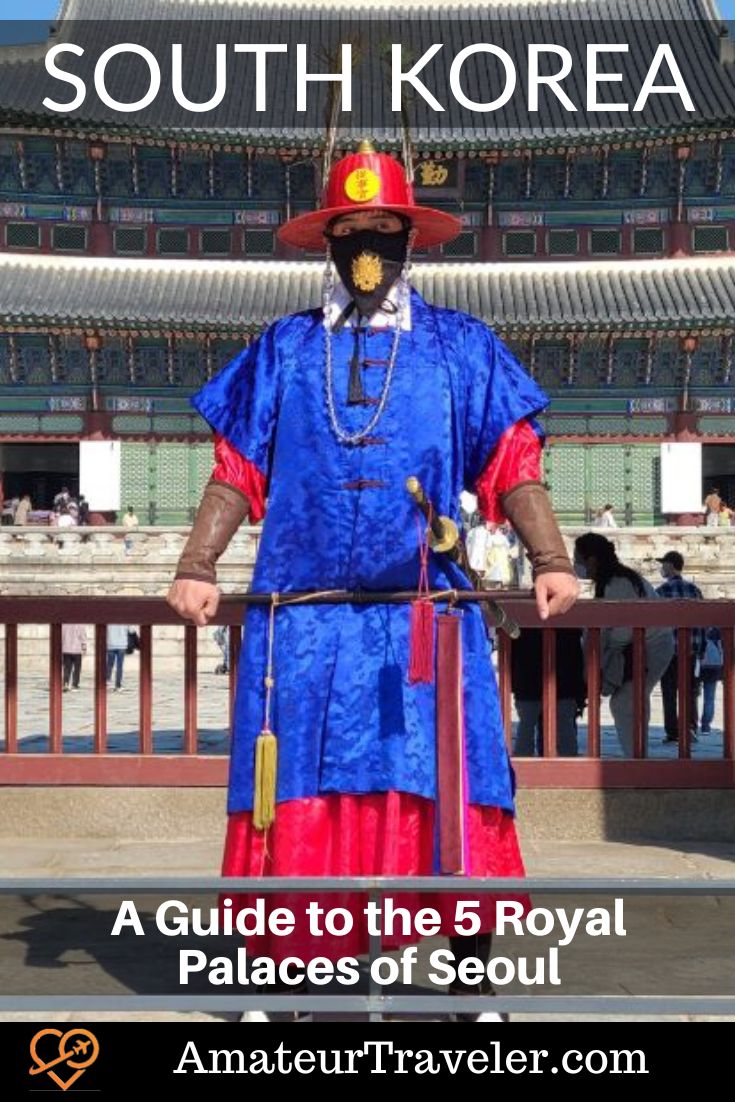
- An Introduction To The Royal Palaces In Seoul
- Gyeongbokgung Palace: Seoul’s Main Royal Palace
- Changdeokgung Palace & Secret Garden: Seoul’s Hidden Beauty
- Changgyeonggung Palace: An Urban Retreat
- Deoksugung Palace: Where East Meets West
- Gyeonghuigung Palace: Seoul’s Forgotten Royal Palace
- Tips for Visiting the Royal Palaces In Seoul
.jpg)
Gyeongbokgung Palace Seoul
There are a total of 5 royal palaces in Seoul, all of which are open to the public and showcase the best of traditional Korean architecture, design, and royal life:
- Gyeongbokgung Palace: The main royal palace in Seoul and arguably the most beautiful and busiest.
- Changdeokgung Palace: The most well-preserved palace that also features an impressive secret garden.
- Changgyeonggung Palace: A peaceful palace that was built as a retirement place for the King’s father.
- Deoksugung Palace: An elegant palace that features a mixture of traditional Korean and neoclassical European designs.
- Gyeonghuigung Palace: A less-visited palace that includes the Seoul Museum of History and peaceful grounds.
Each royal palace has its own unique charms and features, such as tranquil ponds lined by cherry blossoms, secret gardens where royalty once hid away from the public eye, and even neoclassical European buildings surrounded by stately Korean stone walls.
This guide to the 5 royal palaces of Seoul will introduce you to each palace, highlighting each palace’s attractions, as well as shining a spotlight on its history. Seoul, and Korea in general, has had a turbulent past, with invasions and wars between neighbors for centuries, which often resulted in royal palaces being plundered or destroyed. Fortunately, Korea has worked hard over the last few decades to restore these magnificent attractions so visitors from around the world can come and enjoy palace life.
When you travel to Korea, you should definitely include at least one of these royal palaces in your itinerary, if not more. Walk around the palace grounds, peek into former royal residences, and see what life in Korea was like for those at the top.
Gyeongbokgung Palace: Seoul’s Main Royal Palace
Gyeongbokgung Palace is Seoul’s largest and most popular of the five royal palaces. Built in 1395, when Seoul became the capital of Korea, this palace is truly the heart of the city and is close to a number of the best tourist destinations. It lies between Gwanghwamun Square in the south and the presidential Blue House, also known as Cheong Wa Dae, to the north. You’ll also find Bukchon Hanok Village to the east and the trendy Tongin-dong neighborhood to the west.
The sprawling gardens, imperious palace grounds, pretty ponds, and beautiful nature that blends together inside Gyeongbokgung Palace make it a must-see destination for travelers to Seoul.
- Search for Great Tours HERE
- Get an eSim to be able to use your smartphone abroad.
- Buy Travel Insurance
- Get a Car Rental
- Book Your Accommodation HERE
- Get a universal plug adapter
.jpg)
Even before you enter the palace, you can see the majesty of this destination with tall, stark white-brick walls topped with unmistakably Korean black tiles surrounding the entire palace, hiding the treasures inside. Arrive at 10:00 or 14:00 and you’ll be treated to the changing of the guards, a colorful spectacle that shows the traditional ceremony with guards holding large spears and swords, marching together into the palace.
Once you enter the palace through the beautifully decorated wooden gates, you’ll immediately realize just how large this palace is. This royal palace is indeed fit for royalty, covering more than 400,000 square meters of central Seoul. After making your way through the spacious welcome area, where Joseon-era courtiers, advisors, and nobles came to pay their respects and listen to their ruler’s orders, the palace gives you the freedom to explore the rest of the grounds as you like.
What To See At Gyeongbokgung Palace
One of the main attractions inside the palace is Gyeonghoeru, a lonely pavilion that stands in a serene pond covered with lily pads and surrounded by cherry trees. This is one of the most iconic scenes in Seoul, and in early April, photographers flood here to capture the incredible views. Next to Gyeonghoeru are the royal palace buildings where the former rulers of Korea went about their daily business. Inside these rooms are the King’s Seat, detailed tapestries, golden statues, and other displays of royal wealth and power.
Near the rear of the palace is the newly renovated Hyangwonjeong Pavilion, which stands in the middle of a circular pond, accessible only by a white wooden bridge. Sadly, visitors can’t enter this pavilion, but there are many spots to take pictures in this part of the palace, which show off the drooping willow trees and mountainous background.
To learn more about Korea’s rich history, there are two museums that are free to enter when you’re inside the palace. The National Palace Museum of Korea houses a collection of Joseon Dynasty artifacts, while the National Folk Museum of Korea has interesting displays about Korea’s historic past and is a good place to learn about Korean customs and culture.
How to get to Gyeongbokgung Palace
The nearest subway stations to Gyeongbokgung Palace are Gyeongbokgung Station (Exit 5), Anguk Station (Exit 1), and Gwanghwamun Station (Exit 2). You can easily spot the palace by the large walls surrounding it.
Opening hours:
- Nov-Feb 09:00-17:00
- Mar-May 09:00-18:00
- Jun-Aug 09:00-18:30
- Sep-Oct 09:00-18:00
- Closed every Tuesday
Entry Fees:
- Adults: 3,000 won
- Children (7-18): 1,500 won
- Children under 7: Free
Changdeokgung Palace & Secret Garden: Seoul’s Hidden Beauty
A 10-minute walk away from Gyeongbokgung Palace, passing through the traditional Bukchon Hanok Village, takes you to Changdeokgung Palace and Secret Garden. Whereas Gyeongbokgung Palace offers majestic awe, this secondary palace is much more in tune with nature and offers idyllic views of ponds, plants, and peaceful royal resting places. The surrounding walls are lower here, making the palace more welcoming. The low walls also give a chance to the tall trees to creep over and tease the beauty that lies within.
Changdeokgung Palace, built in 1405, served as the secondary royal palace to Gyeongbokgung Palace until they were both destroyed during a Japanese invasion in the 16th Century. Afterward, Changdeokgung Palace became the primary royal palace in Seoul during the reconstruction period during the 17th and 18th Centuries, when Korea started to prosper again until Gyeongbokgung Palace was also rebuilt and became the main royal palace once more. Despite this change, Changdeokgung remained a popular place for the royal family to relax. It included many buildings dedicated to raising the Crown Prince.
Where Gyeongbokgung Palace impresses with large, open spaces, Changdeokgung Palace beguiles you with closely built palace buildings, narrow pathways, and the ever-encroaching trees and bushes that paint a beautiful background. Once you enter, you’ll see a small courtyard and the forest of pagoda trees, with a stone bridge leading into the main palace buildings. Once past this courtyard, you’ll find the central Changdeokgung Park and other buildings. Wind your way through the low-roofed palace buildings, under walkways, through narrow gates, and under the drooping trees as you explore the palace grounds.
What To See At Changdeokgung Palace
Although Changdeokgung is considered a secondary palace, it’s actually larger than the main royal palace, with more than 460,000 square meters of grounds to explore. However, 60% of the palace grounds are taken up by the delightful Secret Garden, known locally as Huwon. The Secret Garden is a meticulously preserved park that features a number of secluded spots where the royal family would contemplate the responsibilities of imperial life, hold private events, and escape the Korean summer heat. The Secret Garden is one of the highlights of Seoul’s royal palaces and a must-see in the city.
Access to the Secret Garden is limited to 4 English-language guided tours each day, with a limit of 100 guests per tour. Bookings are available in the morning, and tickets sell out fast during peak times. Thanks to this restricted access, the Secret Garden has remained pristine, with nature able to flourish all around. Visitors who make it into the Secret Garden will be treated with views of pagodas overlooking calm ponds, stonewall pathways shaded by leafy trees, secluded resting grounds, and many beautifully preserved traditional buildings.
How to get there to Changdeokgung Palace
The nearest subway station is Anguk Station (Exit 3). It’s a short walk from the subway exit to the royal palace, passing the Arario Museum on the way.
Opening hours:
- Feb-May, Sep-Oct 09:00-18:00
- Jun-Aug 09:00-18:30
- Nov-Jan 09:00-17:30
- Closed on Mondays
Secret Garden Opening Hours:
- Mar-May, Sep-Oct 10:00-17:30
- Jun-Aug 10:00-18:00
- Feb, Nov 10:00-17:00
- Dec-Jan 10:00-16:30
- Closed on Mondays
Entry Fees:
- Adults: 3,000 won
- Children (ages 7-18): 1,500 won
- Children under 7: Free
Secret Garden Entry Fees:
- Adults (ages 25-64): 8,000 won
- Young adults (ages 19-24): 5,000 won
- Senior citizens (ages 65+): 5,000 won
- Children (ages 7-18): 2,500 won
- Children under 7 Free
Changgyeonggung Palace: An Urban Retreat
When you arrive at Changdeokgung Palace, you might not realize that there are actually two palaces in the same location, not just one. These two palaces, seen from above, look like a taijitu, or yin and yang, curving into each other to make one large palatial area that has two distinct halves.
The yin is Changdeokgung Palace, taking up the western and northern areas, while the yang is Changgyeonggung Palace, covering the east and southern areas and sneaking into the north. This palace was typically used as a place for visiting nobility to stay, as well as a home for the royal concubines and lesser royal family members.
King Sejong, one of the most celebrated rulers during the Joseon Dynasty, ordered the construction of Changgyeonggung Palace in the 15th Century as a tribute to his father, King Taejong. At this time, it was known as Suganggung Palace but was later renovated and renamed to the current Changgyeonggung Palace.
This peaceful palace features fewer palace buildings than the aforementioned royal palaces and instead appears more like a majestic retirement home. Although a wall divides these two palaces, you can easily pass between them at a central gate near the entrance to the Secret Garden. When you enter the second palace, you have to pay the 1,000 won entrance fee.
What To See At Changgyeonggung Palace
This leafy palace is the perfect place for a stroll on a sunny day and has lots of pathways through tall forests, lakes, and ponds to peer into, and a greenhouse that looks like it would be more at home in an English palace. Chundangji is a figure-eight pond in the northern part of the palace with a wide variety of trees surrounding it, each bringing their own distinct color and shades during fall and creating one of the best fall foliage sights in Seoul. This part of the palace was originally used by the king and queen to experience farming and sericulture (silk production) so they could understand how their subjects lived and worked.
Near the entrance in the east, you can see the main palace building and surrounding structures. This area is less busy than in other palaces and is a good place to take some photographs among the bright red pillars, dark brown woodwork, and resplendent murals and decorations on the walls.
You can see cultural performances in this area, including some evening shows during summer. Large pagodas are scattered around the palace grounds, perfect for taking your shoes off and recovering in the shade.
How to get there to Changgyeonggung Palace
The nearest subway station is Anguk Station (Exit 3). It’s a short walk from the subway exit to the royal palace, passing the Arario Museum and Changdeokgung Palace on the way. You can also enter via Changdeokgung Palace.
Opening hours:
- Feb-May, Sep-Oct 09:00-18:00
- Jun-Aug 09:00-18:30
- Nov-Jan 09.00-17:30
- Closed on Mondays
Entry Fees:
- Adults: 1,000 won
- Children (ages 7-18): 500 won
- Children under 7: Free
Deoksugung Palace: Where East Meets West
Located opposite City Hall, Deoksugung Palace is a small but pretty royal palace that is perfect for travelers looking to sample traditional Korean treasures and designs without spending a lot of time walking around large palace grounds. Its location next to the City Hall subway station makes it very convenient.
The moment you walk outside, you are confronted by the traditionally dressed royal guards, who perform the changing of the guard ceremony. The changing of the guards at Deoksugung Palace is held at 11:00, 14:00, and 15:30 every day (except Monday).
Originally built as a royal residence for the King’s brother, Deoksugung Palace became a temporary royal palace in Seoul after the Japanese invasion of 1592 as the royal family needed somewhere to live. It became an official palace in 1611 and covered a large part of the area west of Gyeongbokgung Palace.
Unfortunately, most of the palace grounds were converted into other city buildings, leaving Deoksugung as one of the smallest royal palaces in Seoul. What’s left is an eclectic mix of traditional Korean and neoclassical European design that blends East and West in a surprisingly beautiful way. It also features a European-style fountain and garden that provides an interesting contrast to the Korean designs.
What To See At Deoksugung Palace
The palace welcomes you with a tree-lined walkway guiding you towards the two halves inside – the Korean-style traditional palace and Western-style neoclassical buildings. The traditional Korean palace buildings are beautifully decorated, with slanting black rooftops adorned with small statuettes to fend off spirits and protect the inhabitants.
Wander through the palace buildings and discover Jeonggwanheon, a coffee and banquet house built in 1900 in a Romanesque style with side balconies. It’s quite a sight and very different from the traditional buildings.
In the western part of the palace lies two European-style buildings that house the National Museum of Modern and Contemporary Art. It is framed by the aforementioned fountain and gardens.
The outside of Deoksugung Palace is just as famous as the interior and a popular place to go for a stroll and take pictures, especially during fall. The Deoksugung Stonewall Walkway that runs around the palace and surrounding buildings, which includes the Seoul Museum of Art, is a pedestrian-friendly walkway that showcases Korean-style walls topped with the ubiquitous curved black tiles that you’ll see on all traditional Korean buildings. It is best seen when maple leaves and other fall foliage bring their colors to the muted browns and blacks of the walkway.
This area is also a popular K-Drama filming location in Seoul due to its romantic pathways and wide streets.
How to get there to Deoksugung Palace
The palace is directly outside City Hall Station (Exit 2).
Opening hours:
- Open from 09:00 to 21:00
- Closed on Mondays
Entry Fees:
- Adults: 1,000 won
- Children (ages 7-18): 500 won
- Children under 7: Free
Gyeonghuigung Palace: Seoul’s Forgotten Royal Palace
Perhaps the most overlooked royal palace in Seoul, Gyeonghuigung Palace is the youngest palace and least visited. You’d be forgiven for missing it as you explore Seoul, as it’s not in the main tourist areas and is actually hidden behind the Seoul Museum of History and the impressive Heunghwamun Gate. The tall gate, with typically bright red pillars topped with wooden beams, painted green and gold, does a disservice to the palace by obscuring the palace that it is protecting.
Built in the 17th Century, this palace acted as a secondary palace while Changdeokgung was the primary palace. Connected to Deoksugung Palace by a bridge, back when both palaces commanded a much larger presence in the city, this palace once had over 100 halls to house guests and royal events. Tragically, most of the palace was destroyed, and it wasn’t until the 1990s that the palace grounds started to be restored.
What To See At Gyeonghuigung Palace
Compared to the other royal palaces in Seoul, this palace doesn’t feel as impressive, lacking tranquil ponds housing isolated pavilions or majestic natural beauty spread over large palace grounds. However, that’s not to say this palace doesn’t have its own appeal. Due to its lack of popularity, it’s less crowded, so visitors can explore peacefully. That’s especially appealing if you want to capture some scenic photos of royal Seoul without getting crowds of people in the frame.
The aforementioned Seoul Museum of History is a fascinating place to check out to learn more about Seoul’s history and covers local history from prehistoric times to modern day. The two places can be combined in an afternoon.
How To Get There to Gyeonghuigung Palace
Take the subway to Seodaemun Station (Exit 4) or Gwanghwamun Station (Exit 7) and walk a short distance to get to the palace.
Opening Hours:
- Open every day 09:00-18:00
- Closed January 1st
Entry Fees:
- Free to enter
.jpg)
Gyeongbokgung Palace Seoul
Tips for Visiting the Royal Palaces In Seoul
Here are a few tips to help you enjoy visiting the royal palaces in Seoul:
1: Take a tour
Walking tours inside the palace will take you around the palace while explaining the history and significance of each area.
2: Enter for free
You can enter the palaces for free on the last Wednesday of every month. This is known as Culture Day in Korea, and cultural attractions are free or discounted. You can also enter for free if you’re wearing Korean hanbok, which you can rent near to Gyeongbokgung Palace.
3: Buy a discounted palace pass
If you plan to visit all of the palaces while in Seoul, buy the Seoul Palace Combination Ticket. You can get entry to all of the palaces, as well as the Jongmyo Shrine for 10,000 KRW. The pass is valid for 3 months.
.jpg)
Changdeokgung Palace Seoul
4: Join a night tour
During the summer, there are limited night tours that show you the palace at night. These can be a good way to see unique sights that aren’t normally available.
5: Start early
Seoul’s royal palaces are popular tourist destinations and can be very busy, especially during spring and fall. Visit early to experience less crowded scenes and to give yourself plenty of time to explore at your own pace.
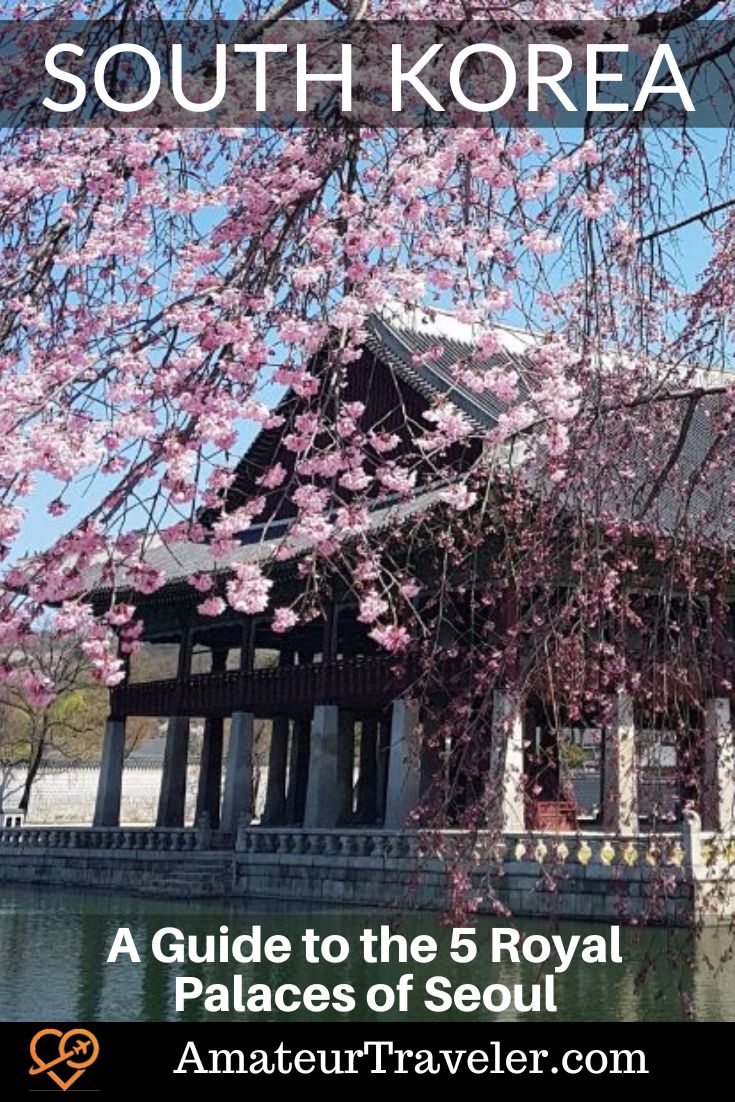
Leave a Reply
Tags: article, seoul, south korea

.jpg)
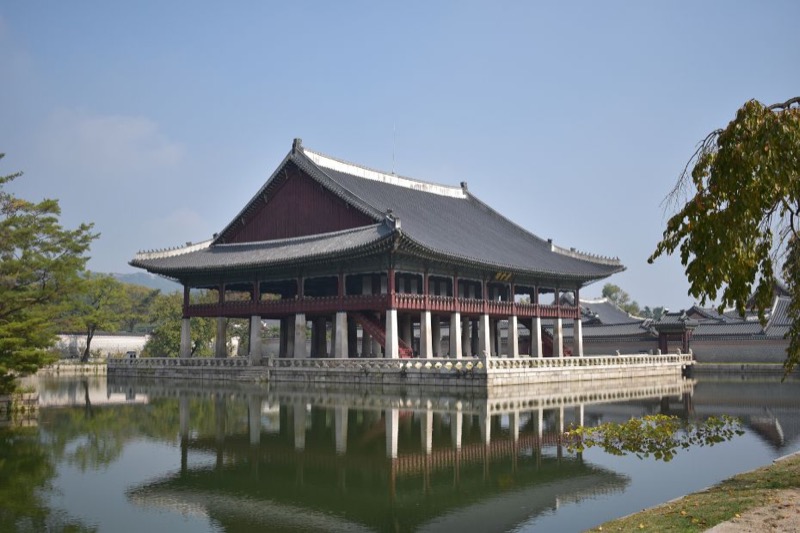
.jpg)
.jpg)
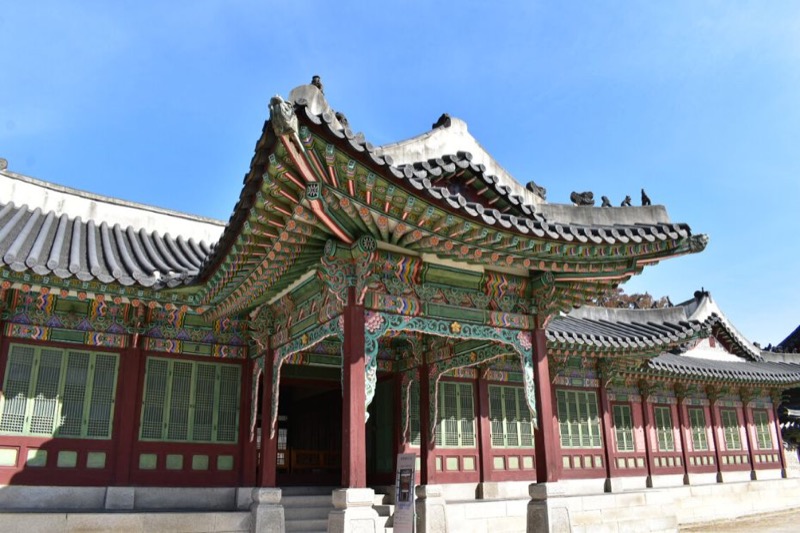
.jpg)
.jpg)
.jpg)
.jpg)
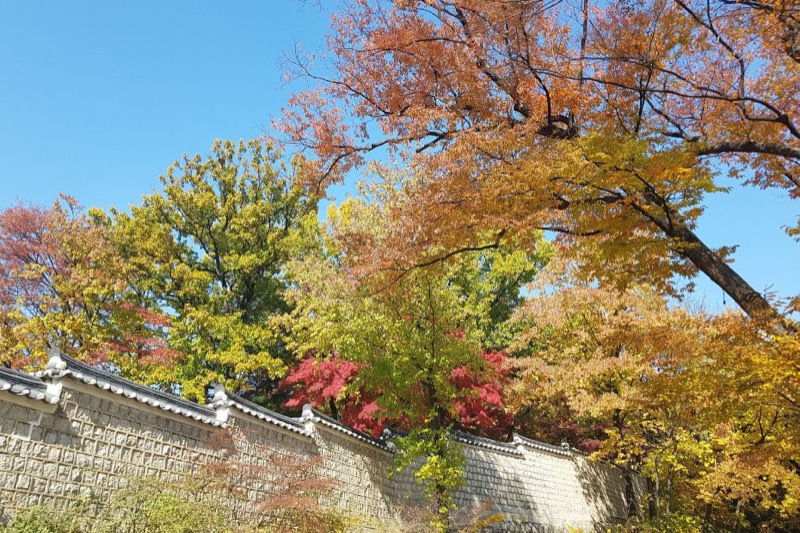
.jpg)
.jpg)
.jpg)
.jpg)
.jpg)
.jpg)
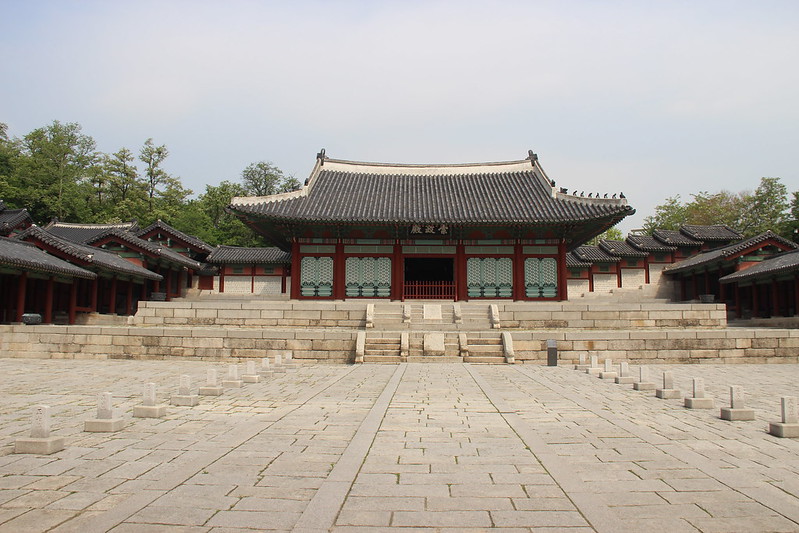
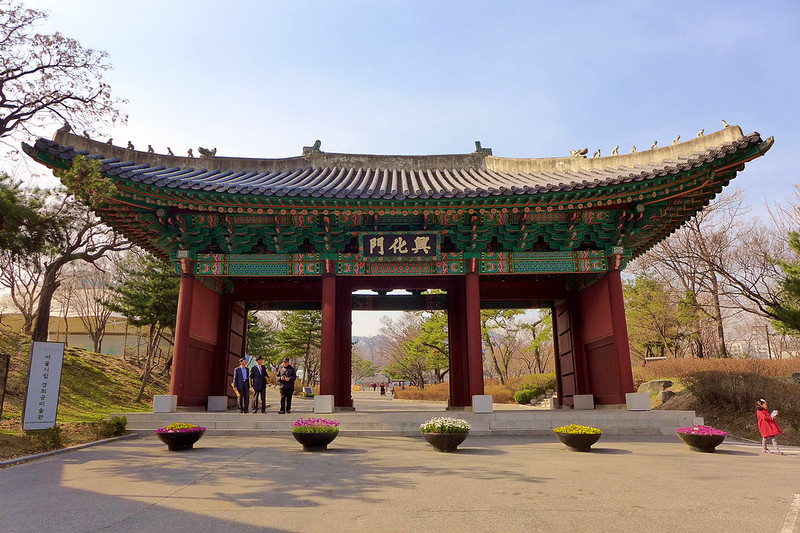
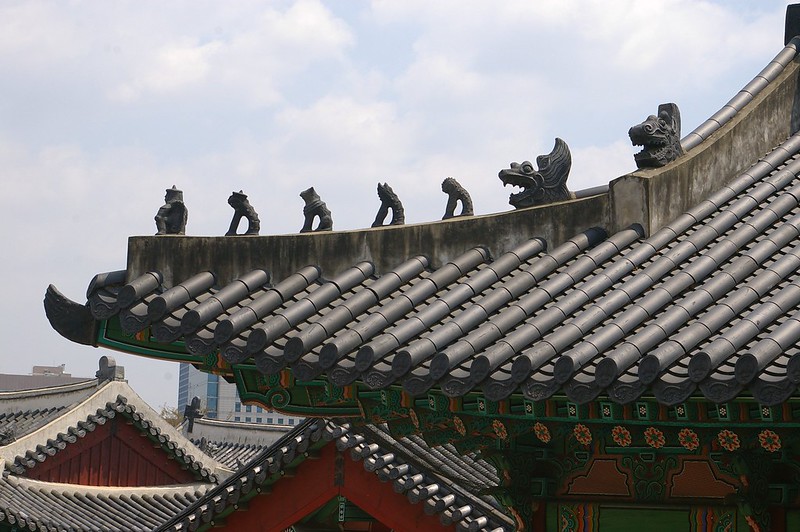
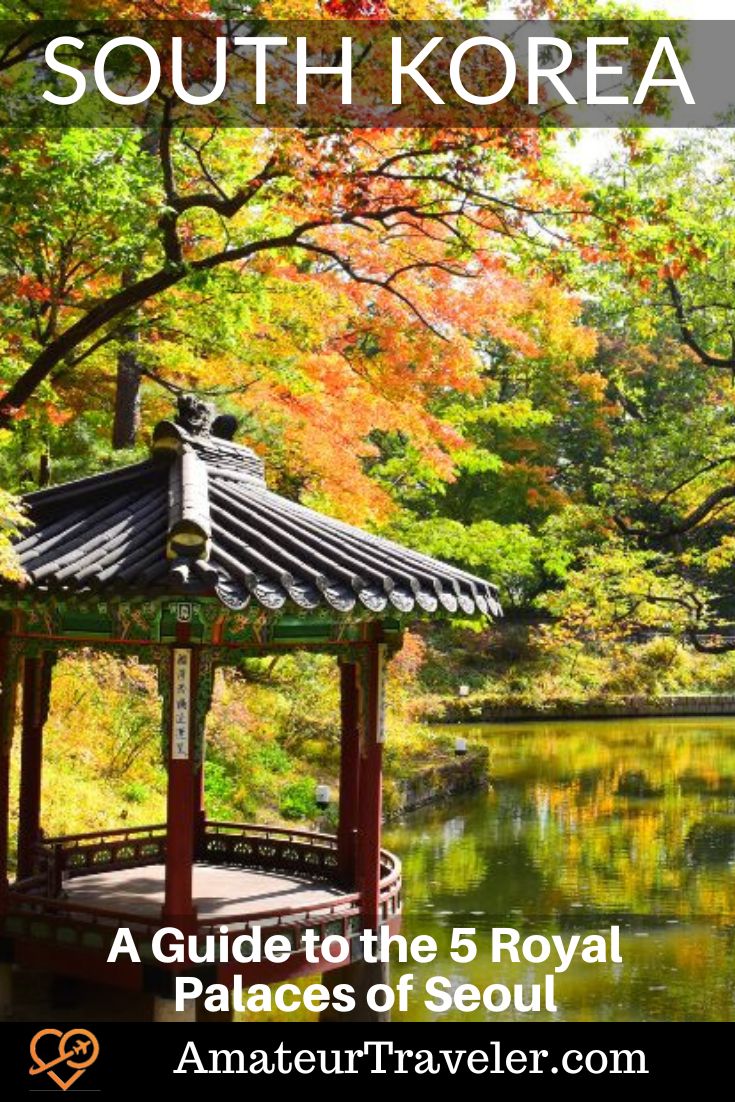
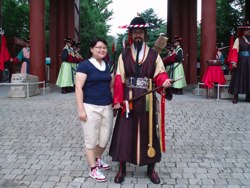 Travel to Seoul, South Korea – Episode 157
Travel to Seoul, South Korea – Episode 157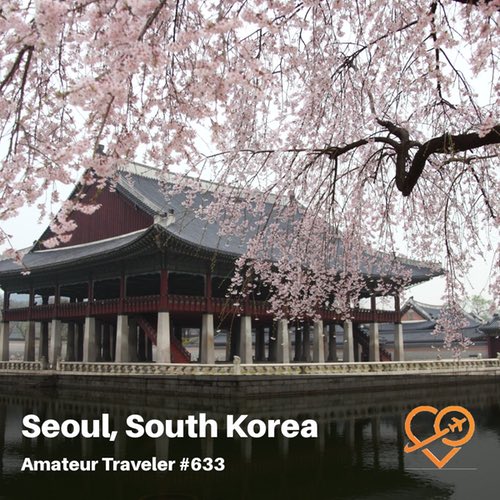 Travel to Seoul, South Korea – Episode 633
Travel to Seoul, South Korea – Episode 633 Guide to Jaipur: The Iconic “Pink City” of India – Stunning Palaces, Vibrant Culture, and Delectable Cuisine
Guide to Jaipur: The Iconic “Pink City” of India – Stunning Palaces, Vibrant Culture, and Delectable Cuisine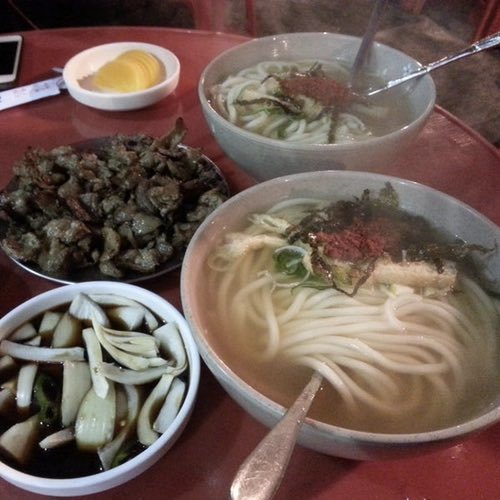 Traditional Korean Food – 10 Things to Eat for Beginners
Traditional Korean Food – 10 Things to Eat for Beginners
